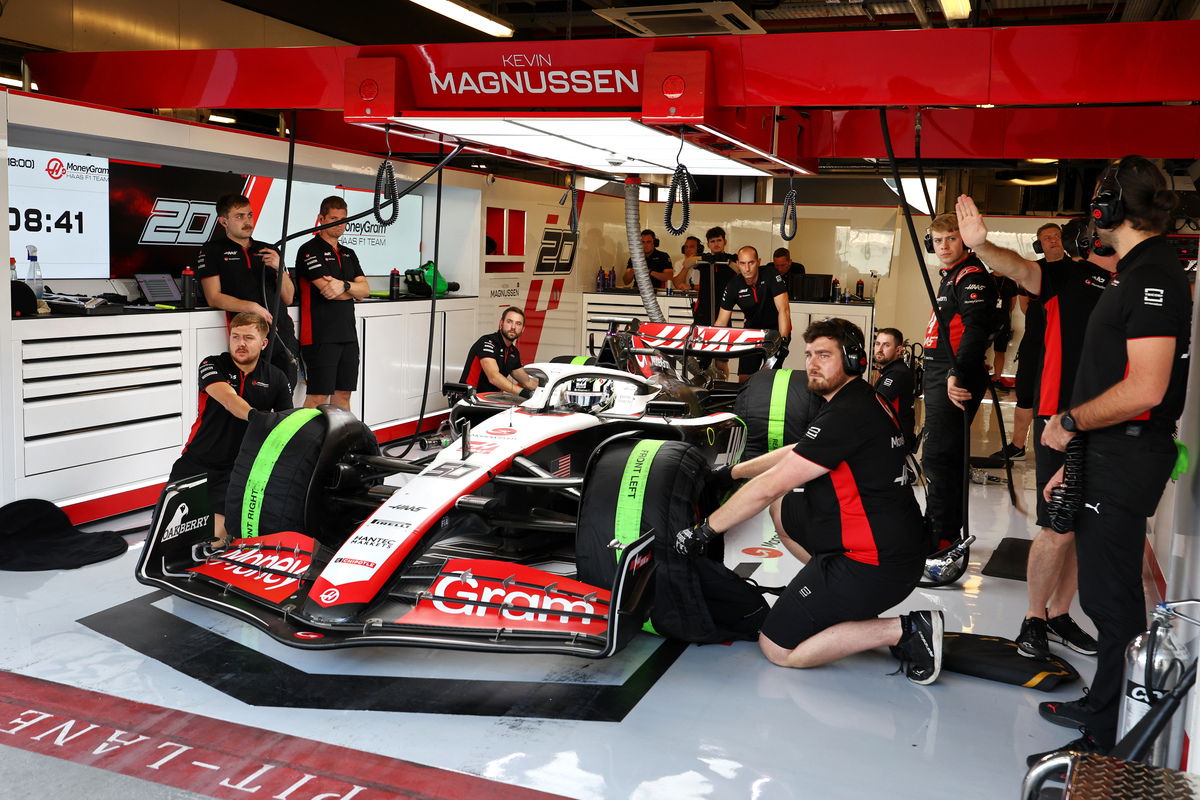

Guenther Steiner has admitted that Haas would likely no longer be in Formula 1 were it not for the introduction of the cost cap.
New for 2022, the sport introduced financial regulations alongside the sporting and technical rules that govern the sport.
It was done to level the playing field and close the gap between the teams at the front, who were spending over $400 million annually.
Now, teams are limited to $135 million, with some exceptions, for what will be a 24-race calendar this season.
Along with preventing excessive spending, the financial rules have had the added benefit of sharply increasing the value of an F1 franchise – many of which are now worth over $1 billion.
According to Forbes, the Haas team was priced at $710 million midway through 2023, the lowest value of the 10 existing operations.
“In general, without the cost cap, I think Haas wouldn’t be here anymore,” Steiner confessed on today’s episode of the KTM Summer Grill.
“So would not a few other teams, because the gap just got too big, and it was all about how much money can you spend?”
Haas operates a unique model for its F1 team, buying in as many components as is permitted under the regulations from Ferrari.
It has a design office within the confines of the Scuderia’s Maranello base and uses the services of Dallara, too.
The cars are based in the United Kingdom, in the same building that once housed Marussia (nee Virgin, Manor, etc), while its administrative offices are in the United States.
Given that set up, the team’s fortunes are entwined with those of Ferrari; a strong year for the Scuderia is typically reflected on a better year for Haas given the shared components.
But while on track there have been difficult periods in the recent past, there have been off-track too.
At the start of 2022 it parted ways with title sponsor Uralkali and dumped its Russian driver, Nikita Mazepin, following the outbreak of hostilities in the Ukraine.
It wasn’t the first time it had split from a title partner.
Back in 2019, the relationship with Rich Energy, a mysterious energy drinks company headed by the eccentric William Storey, ended in bizarre circumstances after the British Grand Prix.
Results were difficult to come by in the years that followed, meaning the team was also eligible for less prize money from Formula 1.
The net result was uncertainty surrounding the squad’s future, a fact that has now been put to rest by the introduction of the financial regulations.
“2020 and ’21 were very tough years for us because we didn’t know if we are staying around in Formula 1 or not,” he said when asked how the team is now travelling.
“But in ’22, from where we were, we came back – I wouldn’t say mega strong, but fairly strong and then obviously we wanted to build on that one.
“In the beginning of ’23, we built on it and came back good, but then, I don’t want to bore you again with that story, it didn’t go the right direction.
“But I think the cost cap in general is very good for Formula 1.
“As you can see, the field in Brazil in Q1 was within eight-tenths of a second – 20 cars in eight-tenths of a second is quite an amazing result – which is 50 metres. Everybody, 20 cars in 50 metres.
“That is, I think, just down to the cost cap and a more equal distribution of the prize money.
“The teams are better or are closer together from the back of the grid to the front.
“Obviously, it makes it more difficult to move up, you know, because everybody is the same, but that should be a fair competition should be like this.”





















Discussion about this post